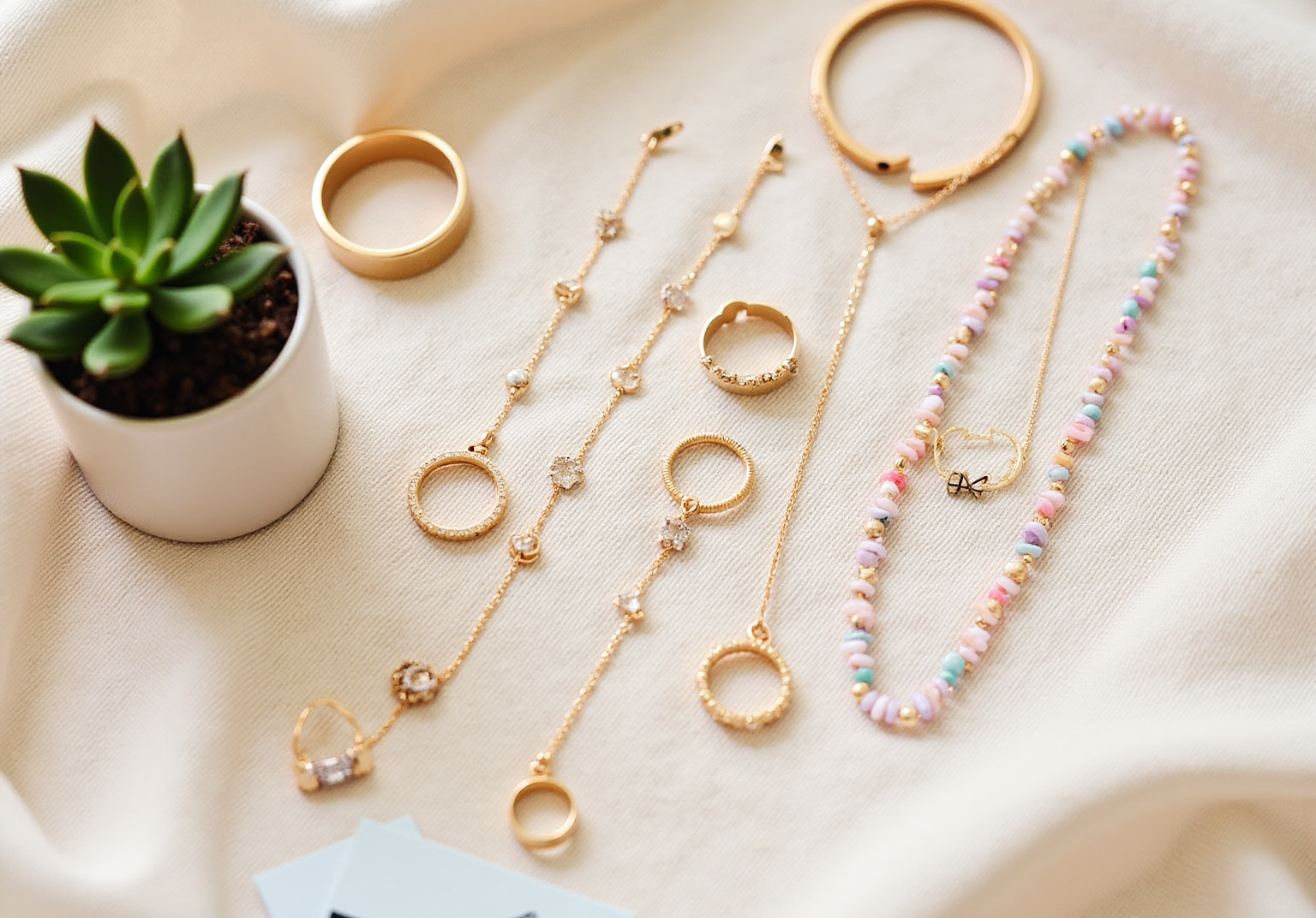
Overview
Effective advertising for jewelry hinges on four pivotal strategies:
- Identifying the target audience
- Selecting appropriate ad formats
- Utilizing high-quality visuals
- Implementing data-driven strategies
Understanding customer demographics and preferences not only enhances engagement but also lays the groundwork for successful marketing. Moreover, diverse ad formats coupled with compelling visuals significantly boost conversion rates. This is further supported by data analytics, which refine marketing approaches for sustained success. By mastering these strategies, advertisers can confidently navigate the competitive landscape of the jewelry market.
Introduction
Effective advertising in the jewelry industry is predicated on a deep understanding of the unique preferences that characterize diverse consumer segments. By accurately identifying target audiences and leveraging compelling visuals, brands can craft marketing campaigns that resonate powerfully, driving both engagement and sales. Yet, in a landscape saturated with myriad strategies, how can jewelry marketers ensure their initiatives stand out? This article delves into four pivotal strategies that not only enhance visibility but also cultivate deeper connections with potential buyers, ultimately transforming fleeting interest into lasting loyalty.
Identify Your Target Audience and Their Preferences
To effectively identify your target audience, start by analyzing existing client data to grasp such as age, gender, income level, and lifestyle. Develop detailed buyer personas that encapsulate your ideal customers, integrating their preferences and shopping behaviors.
For example, if your accessories primarily appeal to millennials, consider their values—such as sustainability and personalization—when crafting your marketing messages. Notably, millennials account for 57% of all spending on ornaments, with an average yearly expenditure of $203, significantly higher than the typical American.
Leverage tools like surveys and social media analytics to gather insights and continually refine your audience profiles. This targeted approach not only enhances engagement but also boosts conversion rates by ensuring your advertising resonates with the specific needs and desires of your audience.
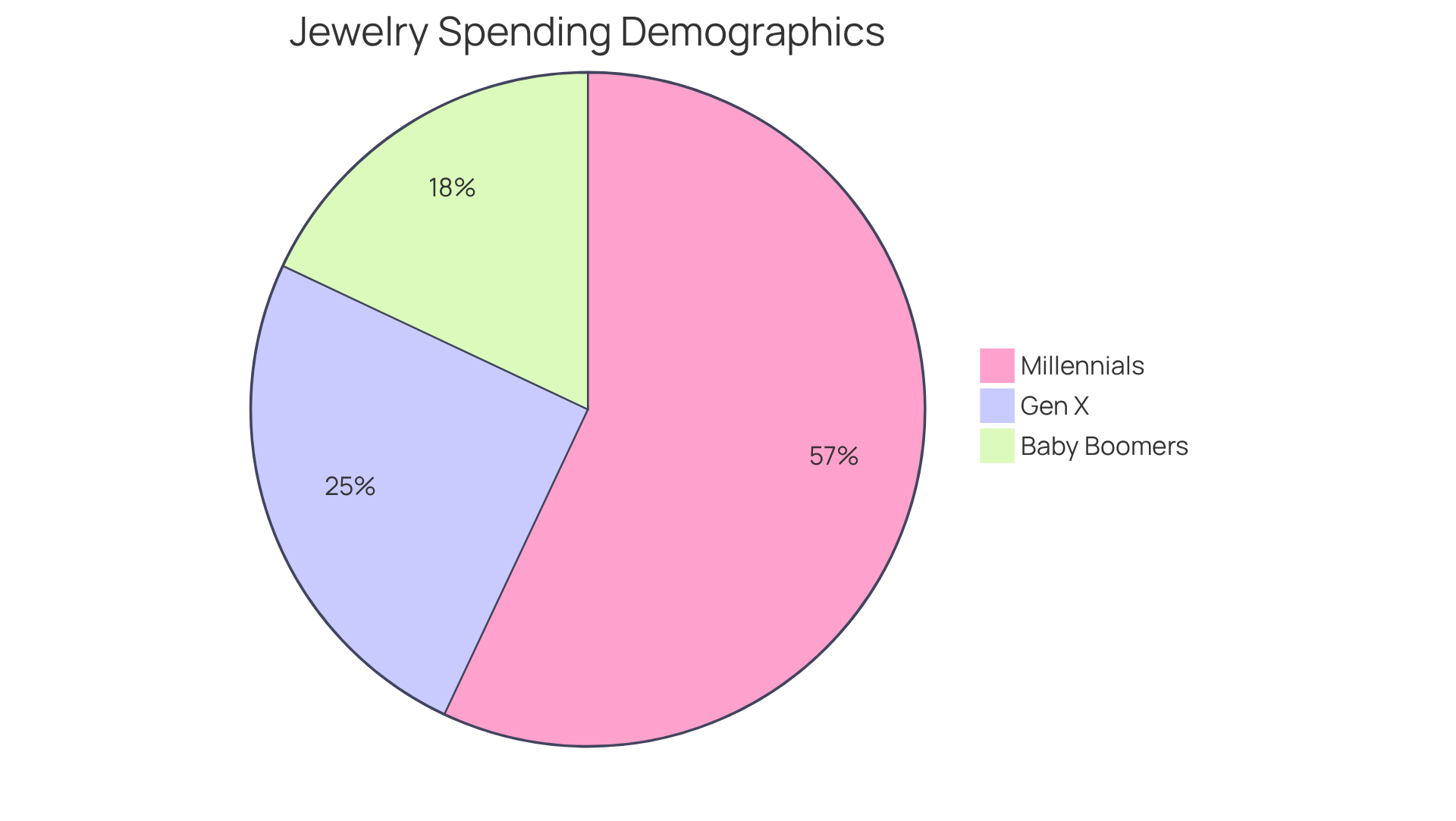
Choose Effective Ad Formats for Jewelry Promotion
To effectively promote accessories, it is essential to utilize a diverse range of ad formats in that cater to varying customer preferences. Image ads excel at highlighting the intricate details of each piece, making them ideal for showcasing craftsmanship and design. In contrast, video advertisements tell the story behind the creation of the accessories, capturing the artistry and emotional significance that resonates with potential buyers. Carousel advertisements are particularly effective, allowing companies to showcase several products within one ad, motivating users to swipe through and discover various options.
Platforms such as Instagram and Pinterest are particularly well-suited for advertising for jewelry due to their visual nature. A jewelry company, for instance, might produce a captivating video focused on advertising for jewelry that showcases the crafting of a piece, highlighting the skill and commitment involved in its creation. This approach captivates audiences and nurtures a stronger bond with the company.
Statistics reveal that video ads can retain up to 95% of viewer information, significantly increasing conversion chances. Additionally, carousel ads enhance engagement by showcasing multiple angles or collections, making them a powerful tool for driving interest. Notably, 75% of buyers make a purchase based on their impression of a company’s website, underscoring the importance of high-quality visuals in ads. Furthermore, with 62.1% of online purchases occurring on mobile devices, optimizing ads for mobile platforms is crucial. By experimenting with various formats and closely analyzing performance metrics, companies can identify which strategies yield the highest engagement and conversion rates, ultimately optimizing their advertising for jewelry efforts. For example, Cartier's carousel advertisement effectively highlights their luxury items, reinforcing the company's image through high-quality visuals.
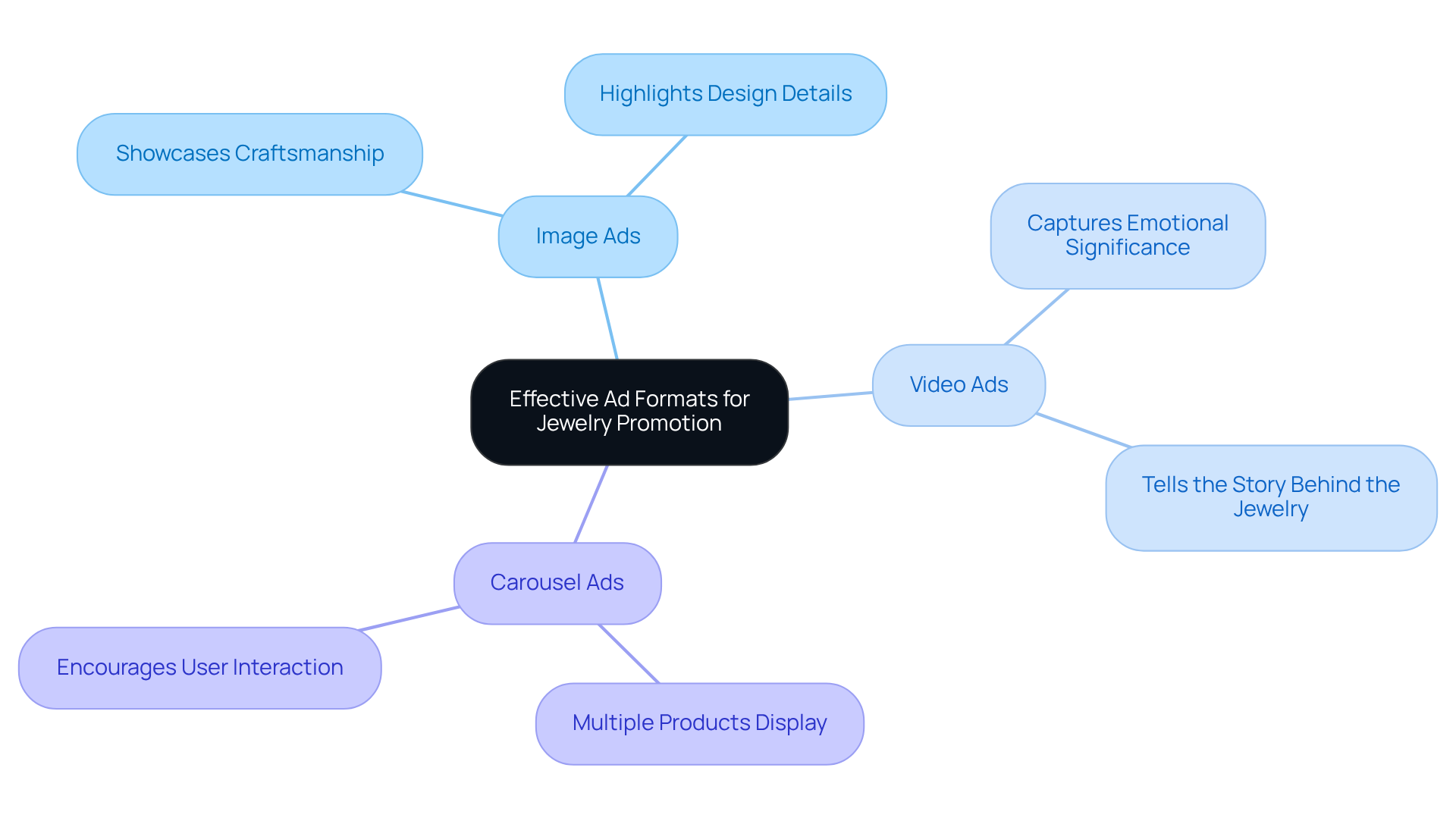
Utilize High-Quality Visuals and Enticing Offers
Investing in high-quality visuals is non-negotiable for accessory brands. Professional photography is essential to capture the sparkle and intricate details of your items, ensuring that images are well-lit and showcase the pieces from multiple angles. Additionally, consider producing lifestyle images that depict your accessories being worn in everyday situations; this approach assists buyers in envisioning themselves with the item.
Alongside these visuals, enticing offers—such as limited-time discounts, exclusive collections, or free shipping—can create urgency and stimulate purchases. For instance, an accessory brand might launch a campaign featuring a new collection at a special introductory price, complemented by stunning visuals that highlight the uniqueness of each item. This strategic combination can significantly and conversion rates.
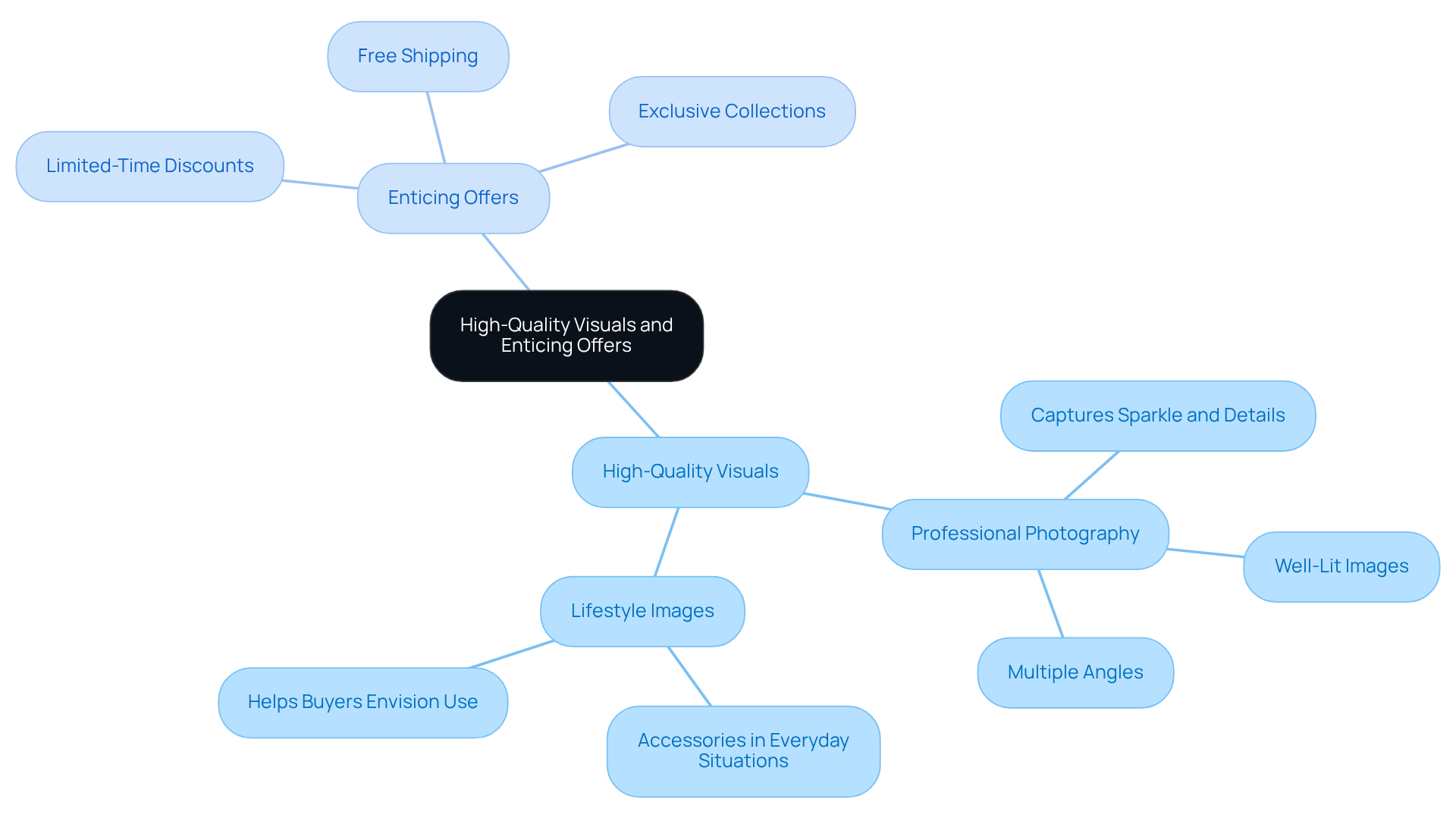
Implement Data-Driven Strategies and Continuous Testing
To maximize the effectiveness of your advertising for jewelry campaigns, it is essential to implement that leverage analytics for informed decision-making. Start by establishing clear key performance indicators (KPIs) to gauge campaign success, including metrics such as:
- Click-through rates
- Conversion rates
- Return on ad spend
A/B testing is crucial in this process, allowing for experimentation with various ad creatives, messaging, and targeting options. For instance, testing two variations of advertising for jewelry—one that highlights the craftsmanship of the jewelry and another that features client testimonials—can reveal which version resonates more with your audience. By analyzing the results, you can refine your approach.
This continuous analysis and adjustment not only enhance campaign performance but also ensure that your advertising for jewelry remains relevant and effective in a rapidly evolving market. In fact, 78% of organizations report that data-driven marketing increases lead conversion and customer acquisition, while 66% of marketing leaders state that data has helped them gain more customers. Embracing this iterative approach is vital for staying competitive and achieving sustainable growth.
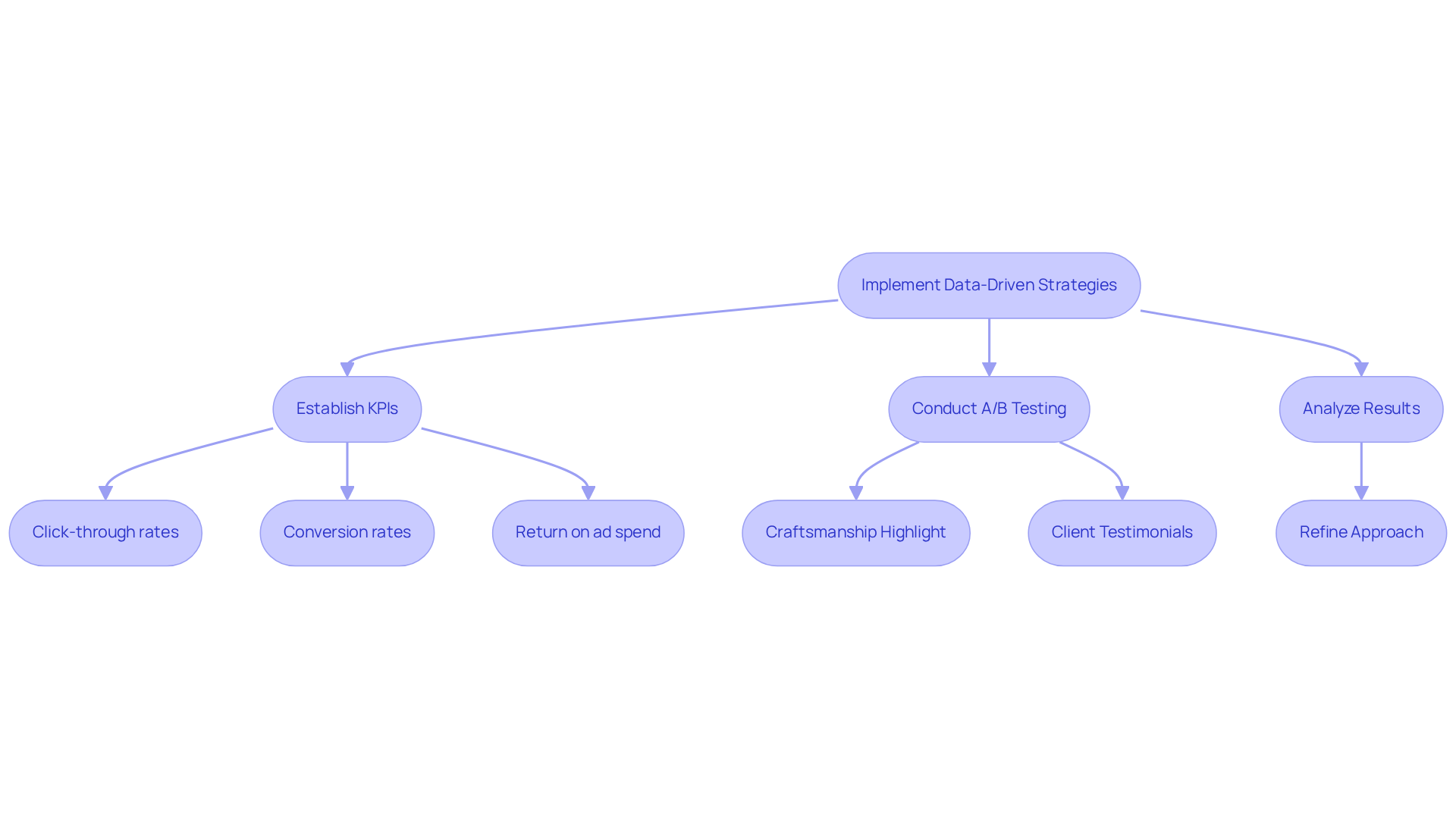
Conclusion
Identifying and implementing effective advertising strategies for jewelry is not just beneficial; it is essential for capturing the attention of potential buyers and driving sales. By thoroughly understanding the target audience and their preferences, brands can tailor their marketing efforts to resonate deeply with consumers. This targeted approach, combined with the strategic use of diverse ad formats, high-quality visuals, and enticing offers, creates a compelling narrative that engages customers and motivates them to make a purchase.
This article highlights four key strategies:
- Understanding the target audience through detailed buyer personas
- Utilizing effective ad formats like video and carousel ads
- Investing in high-quality visuals alongside attractive offers
- Employing data-driven strategies for continuous improvement
Each of these elements plays a crucial role in enhancing engagement and optimizing advertising efforts. By leveraging analytics and testing different approaches, brands can refine their campaigns to ensure they meet the evolving needs of their audience.
Ultimately, the significance of these strategies extends beyond mere sales; they foster a deeper connection between consumers and jewelry brands. As the market continues to evolve, embracing an adaptive and data-informed marketing approach will be vital for achieving sustainable growth. For jewelry brands looking to thrive, investing time and resources into these best practices will not only enhance visibility but also cultivate lasting customer relationships.
Frequently Asked Questions
How can I identify my target audience?
You can identify your target audience by analyzing existing client data to understand key demographics such as age, gender, income level, and lifestyle. Developing detailed buyer personas that reflect your ideal customers, including their preferences and shopping behaviors, is also essential.
Why is it important to understand the preferences of my target audience?
Understanding the preferences of your target audience is crucial because it allows you to craft marketing messages that resonate with their values and desires, enhancing engagement and boosting conversion rates.
What demographic trends should I consider when identifying my audience?
When identifying your audience, consider trends such as age, gender, income level, and lifestyle. For example, millennials are a significant demographic in the ornament market, accounting for 57% of all spending on ornaments and having specific values like sustainability and personalization.
What tools can I use to gather insights about my audience?
You can leverage tools like surveys and social media analytics to gather insights about your audience and continuously refine your audience profiles.
How does targeting a specific audience impact marketing effectiveness?
Targeting a specific audience enhances engagement and increases conversion rates by ensuring that your advertising is tailored to meet the specific needs and desires of that audience.
FAQs











